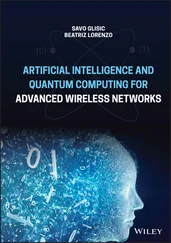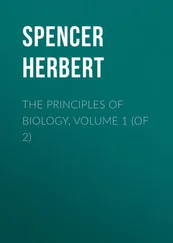Daniel D. Stancil - Principles of Superconducting Quantum Computers
Здесь есть возможность читать онлайн «Daniel D. Stancil - Principles of Superconducting Quantum Computers» — ознакомительный отрывок электронной книги совершенно бесплатно, а после прочтения отрывка купить полную версию. В некоторых случаях можно слушать аудио, скачать через торрент в формате fb2 и присутствует краткое содержание. Жанр: unrecognised, на английском языке. Описание произведения, (предисловие) а так же отзывы посетителей доступны на портале библиотеки ЛибКат.
- Название:Principles of Superconducting Quantum Computers
- Автор:
- Жанр:
- Год:неизвестен
- ISBN:нет данных
- Рейтинг книги:4 / 5. Голосов: 1
-
Избранное:Добавить в избранное
- Отзывы:
-
Ваша оценка:
- 80
- 1
- 2
- 3
- 4
- 5
Principles of Superconducting Quantum Computers: краткое содержание, описание и аннотация
Предлагаем к чтению аннотацию, описание, краткое содержание или предисловие (зависит от того, что написал сам автор книги «Principles of Superconducting Quantum Computers»). Если вы не нашли необходимую информацию о книге — напишите в комментариях, мы постараемся отыскать её.
Principles of Superconducting Quantum Computers
Principles of Superconducting Quantum Computers
Principles of Superconducting Quantum Computers — читать онлайн ознакомительный отрывок
Ниже представлен текст книги, разбитый по страницам. Система сохранения места последней прочитанной страницы, позволяет с удобством читать онлайн бесплатно книгу «Principles of Superconducting Quantum Computers», без необходимости каждый раз заново искать на чём Вы остановились. Поставьте закладку, и сможете в любой момент перейти на страницу, на которой закончили чтение.
Интервал:
Закладка:
15 8 Josephson Junctions 8.1 Tunneling8.1.1 Reflection from a Barrier8.1.2 Finite Thickness Barrier8.2 Josephson Junctions8.2.1 Current and Voltage Relations8.2.2 Josephson Junction Hamiltonian8.2.3 Quantized Josephson Junction Analysis8.3 Superconducting Quantum Interference Devices (SQUIDs)8.4 Josephson Junction Parametric Amplifiers8.5 Exercises
16 9 Errors and Error Mitigation 9.1 NISQ Processors9.2 Decoherence9.3 State Preparation and Measurement Errors9.4 Characterizing Gate Errors9.5 State Leakage and Suppression Using Pulse Shaping9.6 Zero-Noise Extrapolation9.7 Optimized Control Using Deep Learning9.8 Exercises
17 10 Quantum Error Correction 10.1 Review of Classical Error Correction10.1.1 Error Detection10.1.2 Error Correction: Repetition Code10.1.3 Hamming Code10.2 Quantum Errors10.3 Detecting and Correcting Quantum Errors10.3.1 Bit Flip10.3.2 Phase Flip10.3.3 Correcting Bit and Phase Flips: Shor’s 9-Qubit Code10.3.4 Arbitrary Rotations10.4 Stabilizer Codes10.4.1 Stabilizers10.4.2 Stabilizers for Error Correction10.5 Operating on Logical Qubits10.6 Error Thresholds10.6.1 Concatenation of Error Codes10.6.2 Threshold Theorem10.7 Surface Codes10.7.1 Stabilizers10.7.2 Error Detection and Correction10.7.3 Logical Xand ZOperators10.7.4 Multiple Qubits: Lattice Surgery10.7.5 CNOT10.7.6 Single-Qubit Gates10.8 Summary and Further Reading10.9 Exercises
18 11 Quantum Logic: Efficient Implementation of Classical Computations 11.1 Reversible Logic11.1.1 Reversible Logic Gates11.1.2 Reversible Logic Circuits11.2 Quantum Logic Circuits11.2.1 Entanglement and Uncomputing11.2.2 Multi-Qubit Gates11.2.3 Qubit Topology11.3 Efficient Arithmetic Circuits: Adder11.3.1 Quantum Ripple-Carry Adder11.3.2 In-Place Ripple-Carry Adder11.3.3 Carry-Lookahead Adder11.3.4 Adder Comparison11.4 Phase Logic11.4.1 Controlled-���� and Controlled-Phase Gates11.4.2 Selective Phase Change11.4.3 Phase Logic Gates11.5 Summary and Further Reading11.6 Exercises
19 12 Some Quantum Algorithms 12.1 Computational Complexity12.1.1 Quantum Program Run-Time12.1.2 Classical Complexity Classes12.1.3 Quantum Complexity12.2 Grover’s Search Algorithm12.2.1 Grover Iteration12.2.2 Quantum Implementation12.2.3 Generalizations12.3 Quantum Fourier Transform12.3.1 Discrete Fourier Transform12.3.2 Inverse Discrete Fourier Transform12.3.3 Quantum Implementation of the DFT12.3.4 Encoding Quantum States12.3.5 Quantum Implementation12.3.6 Computational Complexity12.4 Quantum Phase Estimation12.4.1 Quantum Implementation12.4.2 Computational Complexity and Other Issues12.5 Shor’s Algorithm12.5.1 Hybrid Classical-Quantum Algorithm12.5.2 Finding the Period12.5.3 Computational Complexity12.6 Variational Quantum Algorithms12.6.1 Variational Quantum Eigensolver12.6.2 Quantum Approximate Optimization Algorithm12.6.3 Challenges and Opportunities12.7 Summary and Further Reading12.8 Exercises
20 Bibliography
21 Index
22 End User License Agreement
List of Figures
1 Chapter 1Figure 1.1 Interpretation of classical versus quantum NOT gates.Figure 1.2 NAND circuit diagram.Figure 1.3 Circuit representation of Eq. (1.31)...Figure 1.4 Symbol for a CNOT gate, and its effect on basis states.Figure 1.5 Circuit for creating an entangled state...Figure 1.6 Result of executing the circuit 1024 times...Figure 1.7 Hypothetical cloning operator, that creates an exact...Figure 1.8 Conceptual illustration of the Deutsch Problem.Figure 1.9 Reversible circuit for calculating f(x).Figure 1.10 Implementations of black-box function...Figure 1.11 Implementation of Deutsch’s algorithm...Figure 1.12 System diagram for a superconducting quantum computer.
2 Chapter 2Figure 2.1 Rotation of a vector of length rCCW around...Figure 2.2 Illustration of how two consecutive rotations...Figure 2.3 Representation of a single qubit state...Figure 2.4 Precession of spin vector for a particle...Figure 2.5 Solutions to the coupled mode equations...Figure 2.6 Rotations enabling measurement of the projections...Figure 2.7 (a) Bloch sphere representation of a mixed state...
3 Chapter 3Figure 3.1 Common symbols for the SWAP...Figure 3.2 Operations needed to convert a...Figure 3.3 Controlled- Ugate. If the...Figure 3.4 Implementation of controlled- U...
4 Chapter 4Figure 4.1 Ladder line used for radio frequency transmission...Figure 4.2 Equivalent circuit for a transmission line...Figure 4.3 A transmission line terminated with a load impedance...Figure 4.4 Voltage standing wave pattern along a transmission...Figure 4.5 Impedance looking into a terminated transmission line...Figure 4.6 A real impedance can be matched...Figure 4.7 Some commonly-used types of transmission lines...Figure 4.8 Incoming and outgoing wave amplitudes...Figure 4.9 Definition of voltages and currents for the ABCD...Figure 4.10 Definitions for constructing the...Figure 4.11 Circuit for an attenuator.Figure 4.12 Circulator Circuit diagrams. In actual devices...Figure 4.13 Wilkinson power divider.Figure 4.14 Quadrature hybrid 4-port network...Figure 4.15 Even and odd mode analysis...Figure 4.16 Commonly-used symbol for a quadrature hybrid...Figure 4.17 Mixer Circuit diagrams. In an ideal mixer...Figure 4.18 (a) Circuit to shape a microwave pulse...Figure 4.19 (a) Circuit to recover the cosine...Figure 4.20 Low-pass filter circuits.Figure 4.21 Frequency response of the Tnetwork...Figure 4.22 Circuit illustrating thermal...Figure 4.23 Quantum noise as a function of temperature normalized...Figure 4.24 Noise added by a circuit with power gain...Figure 4.25 Thermal noise from a passive element...Figure 4.26 Noise in a system of cascaded components.Figure 4.27 Layered structure of different...
5 Chapter 5Figure 5.1 Resonator circuits.Figure 5.2 Equivalent circuits for capacitively-coupled...Figure 5.3 Capacitively-coupled transmission line resonator.Figure 5.4 Near the...Figure 5.5 Equivalent circuits used to...Figure 5.6 Characteristics of capacitively-coupled transmission...Figure 5.7 Two LC resonant circuits coupled by a capacitor.Figure 5.8 Coupling between lossless LC resonators...Figure 5.9 Tire swings suspended from a common support...Figure 5.10 Geometry of a transmon qubit...Figure 5.11 Equivalent circuits for transmission line...Figure 5.12 Magnitude and phase of the reflected signals...
6 Chapter 6Figure 6.1 Classical harmonic oscillator consisting of a mass...Figure 6.2 Quantum mechanical harmonic oscillator...Figure 6.3 LCresonant circuit.Figure 6.4 Lumped circuit model for an open-circuited...Figure 6.5 Capacitively-coupled LC resonant circuits.
7 Chapter 7Figure 7.1 The Fermi-Dirac distribution gives the probability...Figure 7.2 The Bose-Einstein distribution gives the expectedFigure 7.3 Depiction of a periodic potential created by the sumFigure 7.4 Cubic lattice in k-space...Figure 7.5 Spring-mass model for phonons on a 1-D lattice.Figure 7.6 Graphical depiction of electron...Figure 7.7 Visualizing conduction as the...Figure 7.8 A rectangular wire used to relate the voltage...Figure 7.9 A superconductor expels magnetic flux (top)...Figure 7.10 The potential is negative (attractive)...Figure 7.11 Diagrammatic representation of two electrons...Figure 7.12 The delayed response to the presence of an electron...Figure 7.13 The probability that a pair state is occupied...Figure 7.14 Geometry used to understand the London gauge.Figure 7.15 Behavior of the magnetic field and superconducting...Figure 7.16 Geometry of a superconducting sample...
8 Chapter 8Figure 8.1 Geometry for a particle incident from...Figure 8.2 Geometry for a particle incident from...Figure 8.3 A Josephson junction is formed by two superconductors...Figure 8.4 Circuit symbols for a Josephson junction...Figure 8.5 Non-linear resonant circuit formed...Figure 8.6 Two Josephson junctions in parallel...Figure 8.7 Example geometry for applying a current to tune...Figure 8.8 Parametric reflection amplifiers...
Читать дальшеИнтервал:
Закладка:
Похожие книги на «Principles of Superconducting Quantum Computers»
Представляем Вашему вниманию похожие книги на «Principles of Superconducting Quantum Computers» списком для выбора. Мы отобрали схожую по названию и смыслу литературу в надежде предоставить читателям больше вариантов отыскать новые, интересные, ещё непрочитанные произведения.
Обсуждение, отзывы о книге «Principles of Superconducting Quantum Computers» и просто собственные мнения читателей. Оставьте ваши комментарии, напишите, что Вы думаете о произведении, его смысле или главных героях. Укажите что конкретно понравилось, а что нет, и почему Вы так считаете.
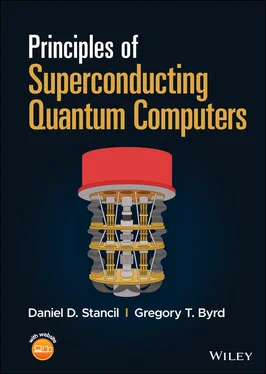
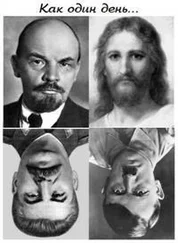

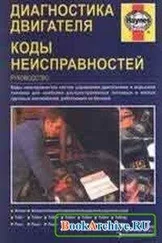

![Алексей Лавров - Quantum Ego [СИ]](/books/414972/aleksej-lavrov-quantum-ego-si-thumb.webp)

